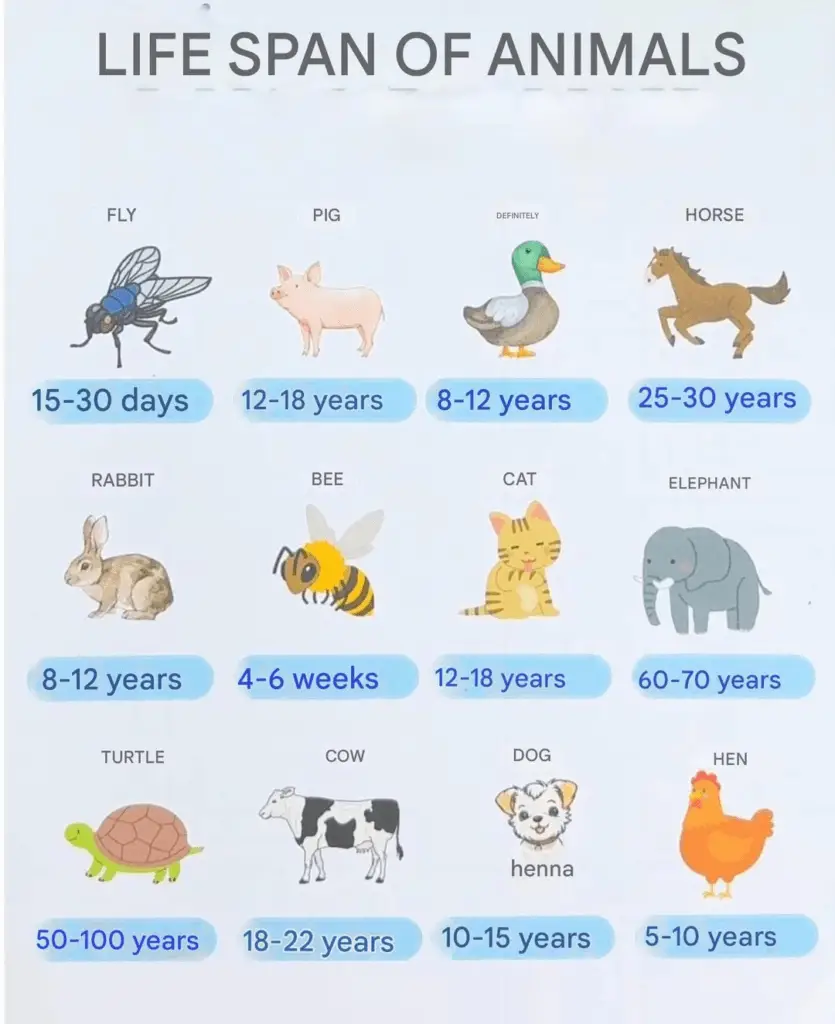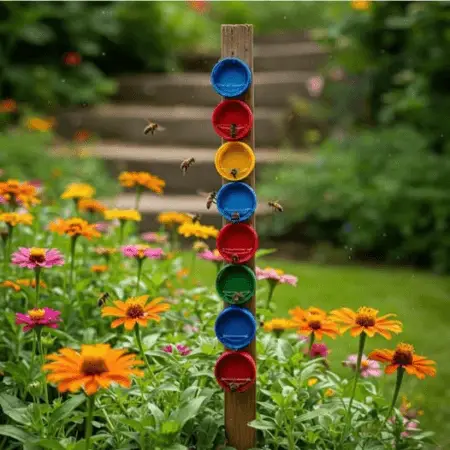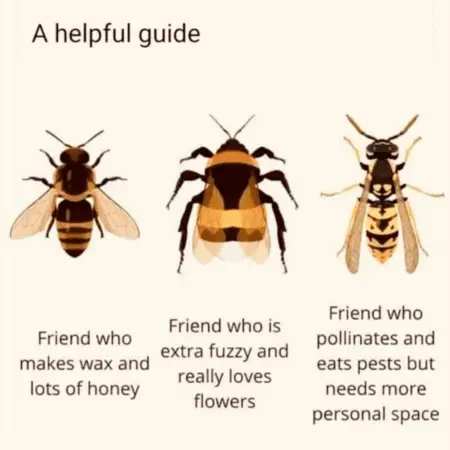Time influences all living things, shaping their existence and experiences in unique ways.
Lifespans vary significantly across species. Humans typically live around 70 years. In contrast, some creatures, like the mayfly, may only survive for a single day, while others, including specific tortoises and clams, can live for hundreds of years. This remarkable range underscores the incredible diversity of life on Earth.
Exploring these differences in lifespan reveals much about how various species adapt to their surroundings and their ecological roles. By examining both short-lived insects and near-immortal organisms, insights emerge regarding the biological and ecological factors that contribute to the longevity of these diverse life forms.
Table of Contents
Key Takeaways
- Lifespan varies greatly among different species, from days to centuries.
- Organisms adapt to their environments, showcasing unique survival strategies.
- Understanding longevity can reveal important ecological and biological insights.
Table of Contents
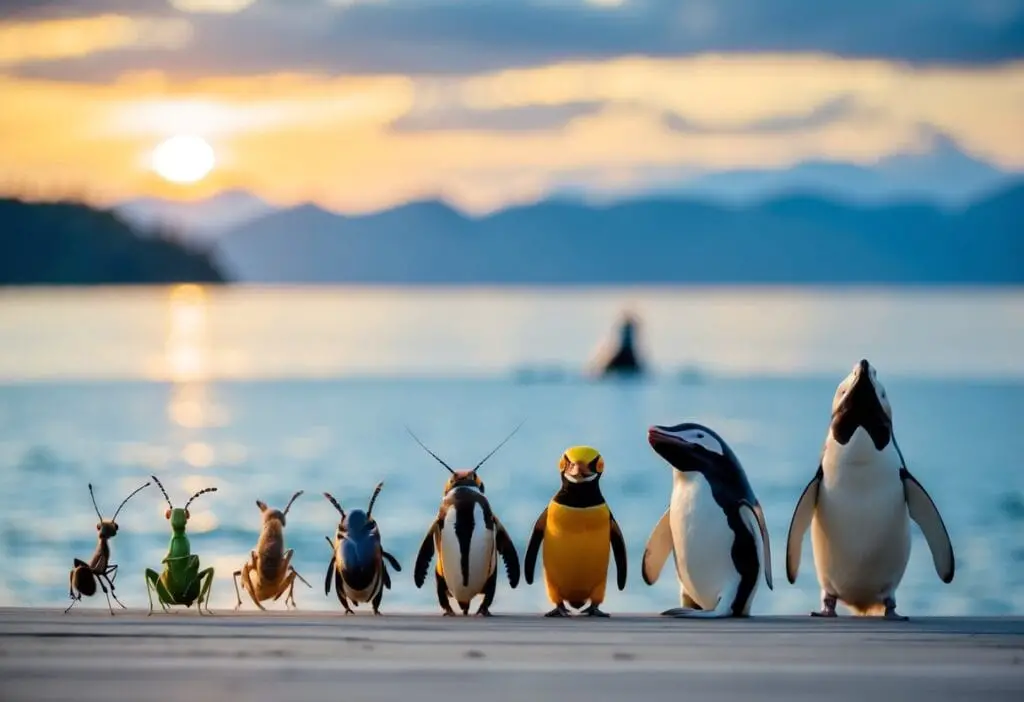
Key Insights
- Lifespans among different species can differ significantly, ranging from a single day to thousands of years.
- Numerous animals possess special traits that affect how long they live.
- Recognizing these differences enhances the understanding of the diverse types of life on Earth.
This section highlights important facts about animal lifespans, covering various groups from the smallest insects to the longest-living marine organisms.
Duration of Life
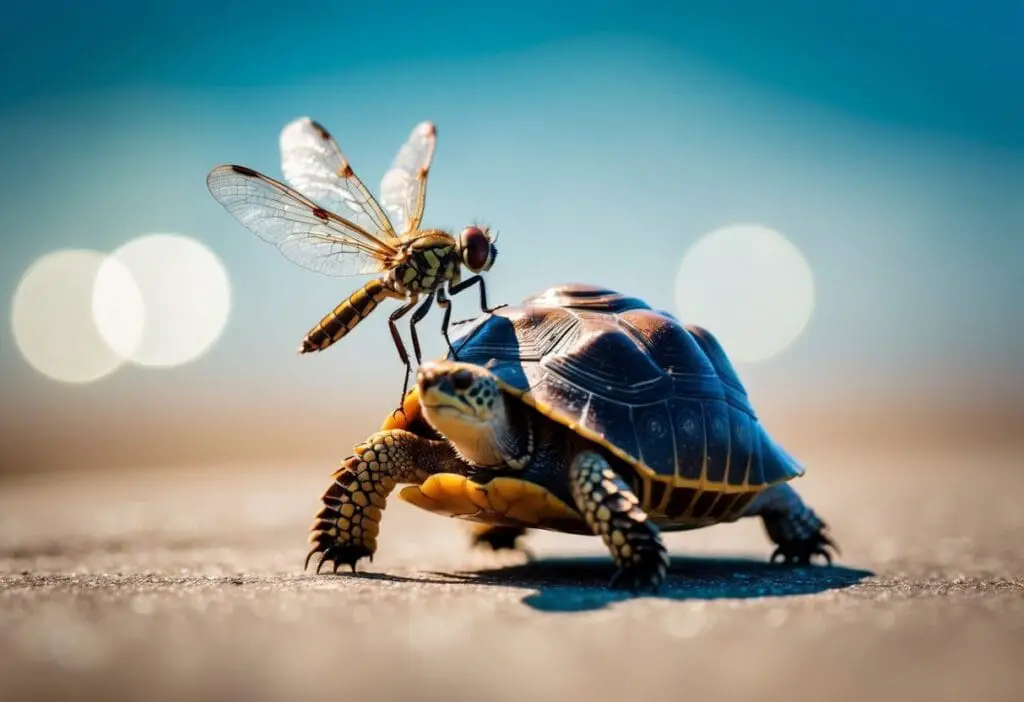
Life on Earth spans a remarkable array of timeframes, with various species exhibiting vastly different lifespans.
For example, the mayfly is known for its brief existence, lasting only 24 hours or even less. Meanwhile, the drone ant survives for just three days, while a male mosquito typically lives about a week.
A housefly can reach an average lifespan of 15 to 25 days and can produce around 1,000 eggs within that time. The female mosquito usually lives for about a month.
Several species enjoy longer lives. The house mouse may average around one year, while a dog can live approximately 13 years, with breeds like Great Danes occasionally exceeding 7 feet in height. The tiger has a life expectancy of about 15 years, and the domestic cat typically lives around 16 years.
Some animals can thrive for decades. The bald eagle can live up to 32 years, and the giraffe reaches an average of 25 years. Remarkably, the horse can live as long as 40 years, and the orangutan has a possible lifespan of 45 years.
On the extreme end, notable longevity records exist, such as the Greenland shark, which can exceed 270 years. Other impressive life forms include the giant tube sponge, living for more than 2,000 years, and some coral reefs, which are believed to last at least 4,000 years. A fascinating case is the Turritopsis dohrnii, a jellyfish known for its ability to revert to earlier life stages, theoretically allowing it to achieve indefinite life.
The diversity of lifespans among species illustrates how time shapes existence in unique ways.
Insect Lifespans
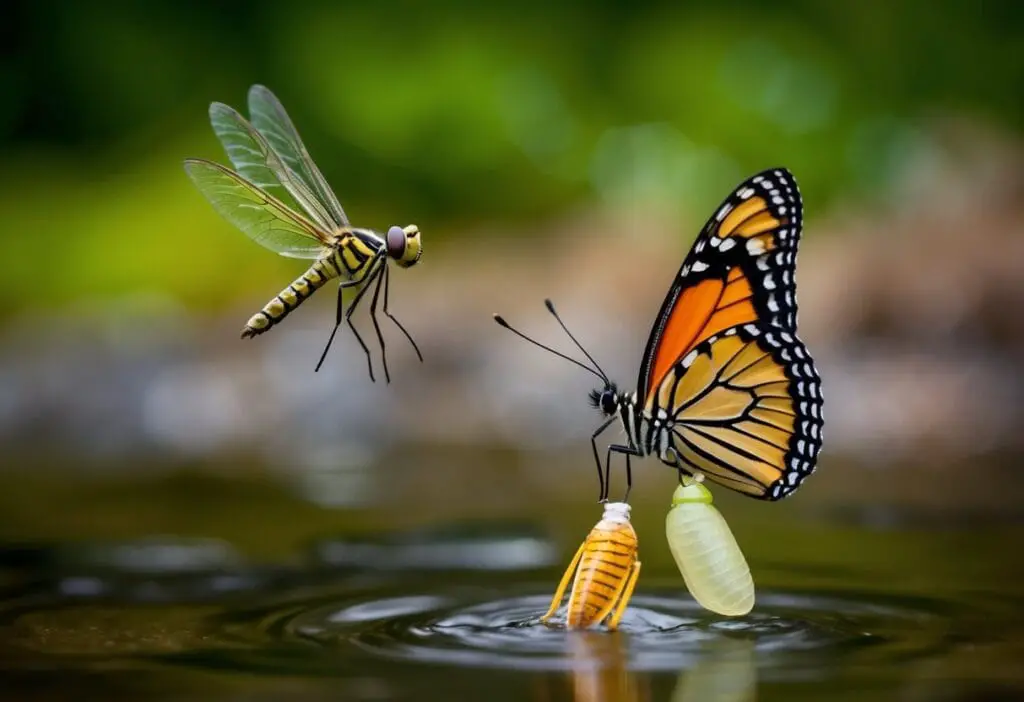
Short Lives
Certain insects experience remarkably short lifetimes.
For instance, the mayfly is famous for having one of the briefest lives on Earth, often existing for just 24 hours or even less.
Other examples include drone ants, which live around 3 days, and male mosquitoes that survive for just about a week without consuming blood. Meanwhile, houseflies have a somewhat longer life, ranging from 15 to 25 days.
Interestingly, female mosquitoes can live up to a month, as they require blood for reproduction.
Brief Existence
A number of insects have lifespans extending over just a few months.
For example, dragonflies typically live for approximately 4 months. Meanwhile, bed bugs can persist for up to 6 months, going through seven life stages during their existences.
In contrast, honeybees can survive for as long as 5 years, thanks to their specialized colony structure.
Aquatic Life Longevity
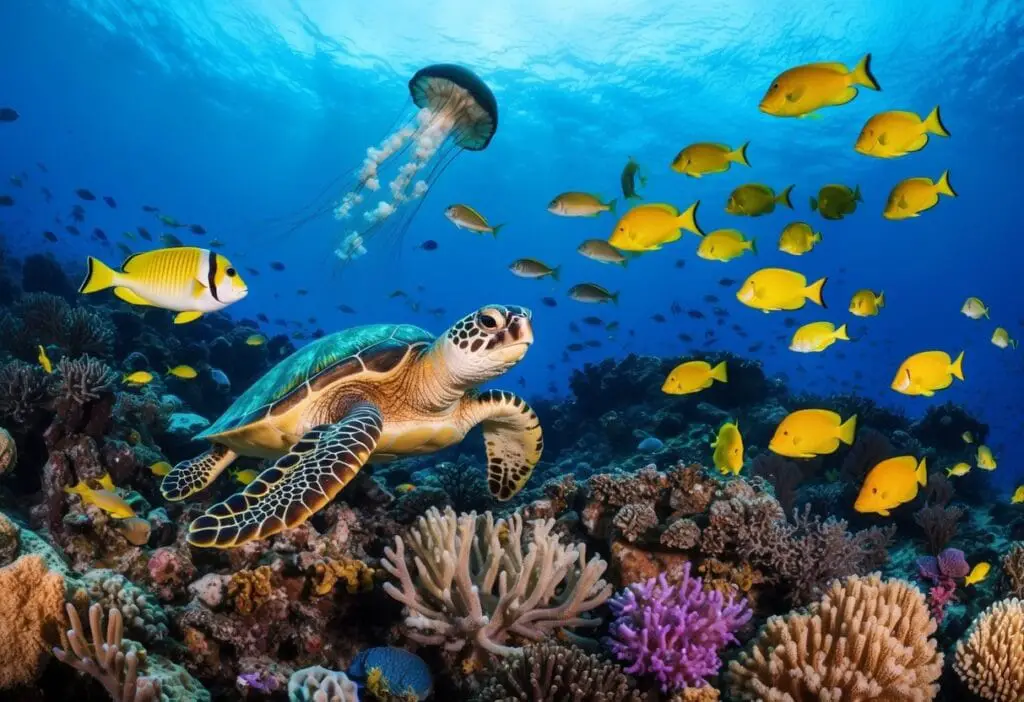
Jellyfish and Beyond
Aquatic life forms exhibit a wide range of lifespans.
For example, the moon jellyfish has a life expectancy of approximately 18 months.
In contrast, the remarkable jellyfish known as Turritopsis dohrnii can revert to its early life stage, potentially allowing it to live indefinitely.
Other notable species include the great white shark, which can survive for as long as 70 years, and the Nile crocodile, capable of reaching ages up to 95 years, having existed alongside dinosaurs.
Marine Maturity
Longevity is seen across many aquatic species.
For instance, the Pacific ocean perch can live for around 98 years, while the white sturgeon may reach up to 104 years.
The greenland shark stands out as the longest-living vertebrate, with lifespans exceeding 270 years.
Additionally, the giant tube sponge can exist for over 2,000 years, while coral formations, particularly those in the Great Barrier Reef, can endure for roughly 4,000 years.
Vertebrate Variability
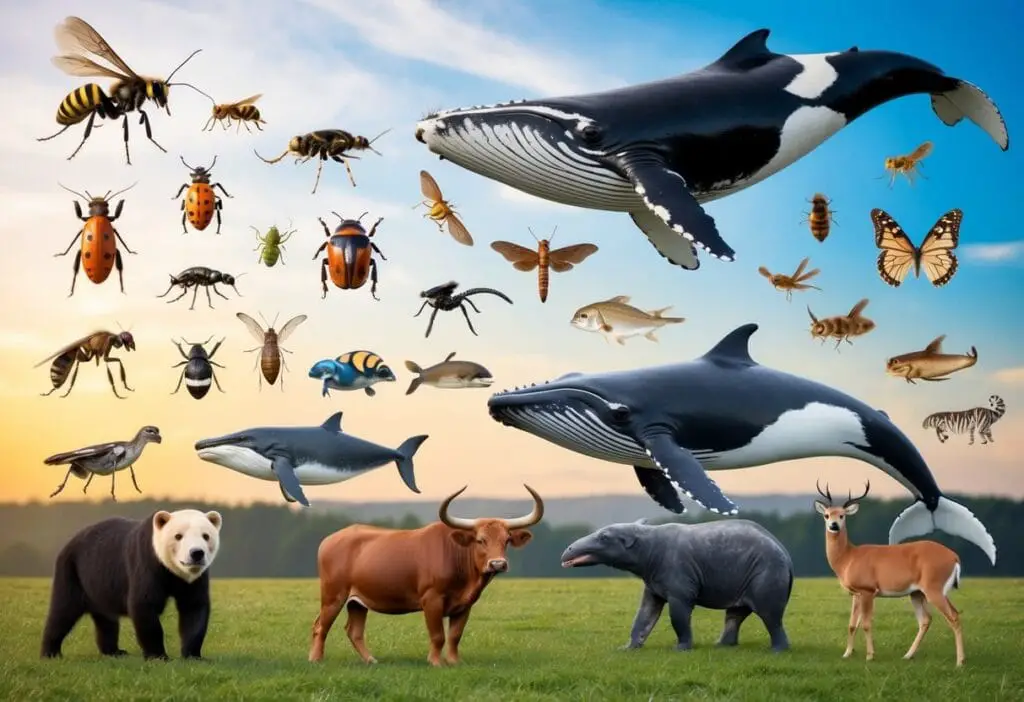
Reptilian Lifetimes
Reptiles showcase a wide range of lifespans, with significant differences among species.
For instance, the panther chameleon lives about 1 year, while some tortoises can exceed 170 years. This vast lifespan variation is a result of different adaptations and environments that reptiles encounter.
- Short-lived reptiles:
- Panther chameleon: 1 year
- Long-lived reptiles:
- Mediterranean spur-thighed tortoise: 125 years
- Galapagos tortoise: 170 years
Mammalian Lifespan Differences
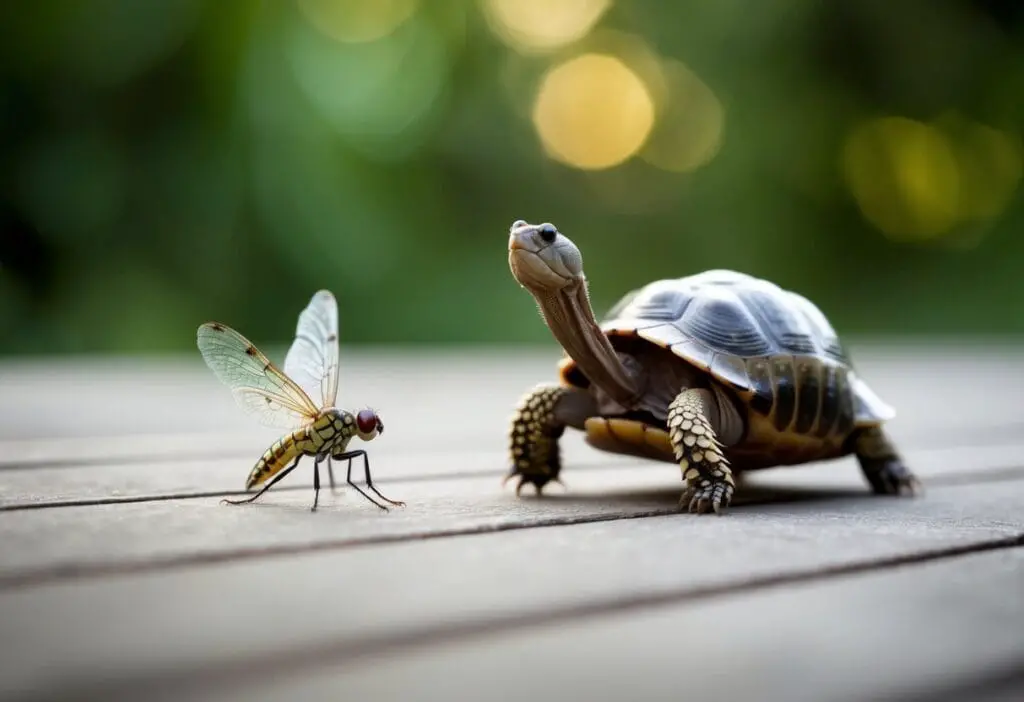
Mammals display diverse life expectancies as well.
For example, while domestic dogs average around 13 years, the bowhead whale can live up to 200 years.
Lifespan among mammals is influenced by various factors, including habitat and diet.
- Short-lived mammals:
- Domestic dog: 13 years
- Long-lived mammals:
- Bowhead whale: 200 years
Avian Longevity
Birds also exhibit a range of lifespans.
For instance, the average house mouse may only last up to 1 year, whereas the Laysan albatross can thrive for about 55 years.
- Birds with shorter lifespans:
- Average house mouse: 1 year
- Birds with longer lifespans:
- Laysan albatross: 55 years
- Andean condor: 50 years
Flights of Time
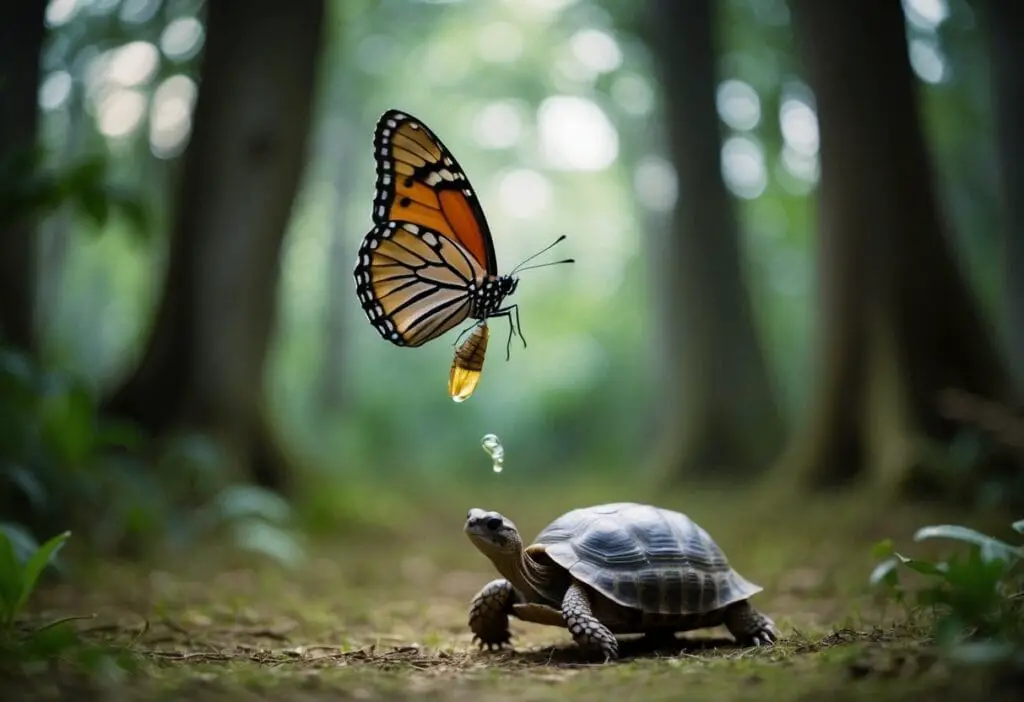
The Insect’s Brief Biographies
Insects are known for their remarkably short lifespans when compared to other animals. Some examples of their brief existences include:
- Mayfly: This insect is famous for living just about 24 hours, making it the shortest-living creature on the planet.
- Drone Ant: These ants survive only for approximately 3 days, earning the title of the shortest-lived ants.
- Male Mosquito: With a lifespan of about one week, this mosquito avoids blood meals for its entire life.
- Housefly: A common household pest, the housefly can live for up to 25 days, producing nearly 1,000 eggs in that time.
- Female Mosquito: Surprisingly, the female variety lives about a month and relies on blood for reproduction.
- Dragonfly: Dragonflies can survive for around 4 months, with some of their ancestors boasting wingspans of up to 30 inches.
- Bed Bug: These pests can live for up to 6 months, going through a total of 7 life stages.
Avian Ages
Birds generally experience longer lifespans than insects, showcasing a wide range of ages. Here are some examples of avian longevity:
- Pigeon: Known for its remarkable homing skills, the pigeon typically lives around 4 years.
- Chicken: Common in farms, chickens average a lifespan of about 9 years.
- Kangaroo: Though primarily a marsupial, the kangaroo has a lifespan of around 10 years, known for its powerful tail.
- Hummingbird: This small bird can live up to 12 years, with an impressively high heart rate.
- Bald Eagle: A symbol of strength in the United States, this majestic bird can live up to 32 years.
- Laysan Albatross: Known for its impressive longevity, this bird can survive up to 55 years, though it is awkward on land.
- Macaw: Exotic and colorful, some macaws enjoy lifespans that exceed an astonishing 100 years.
Mammals and More
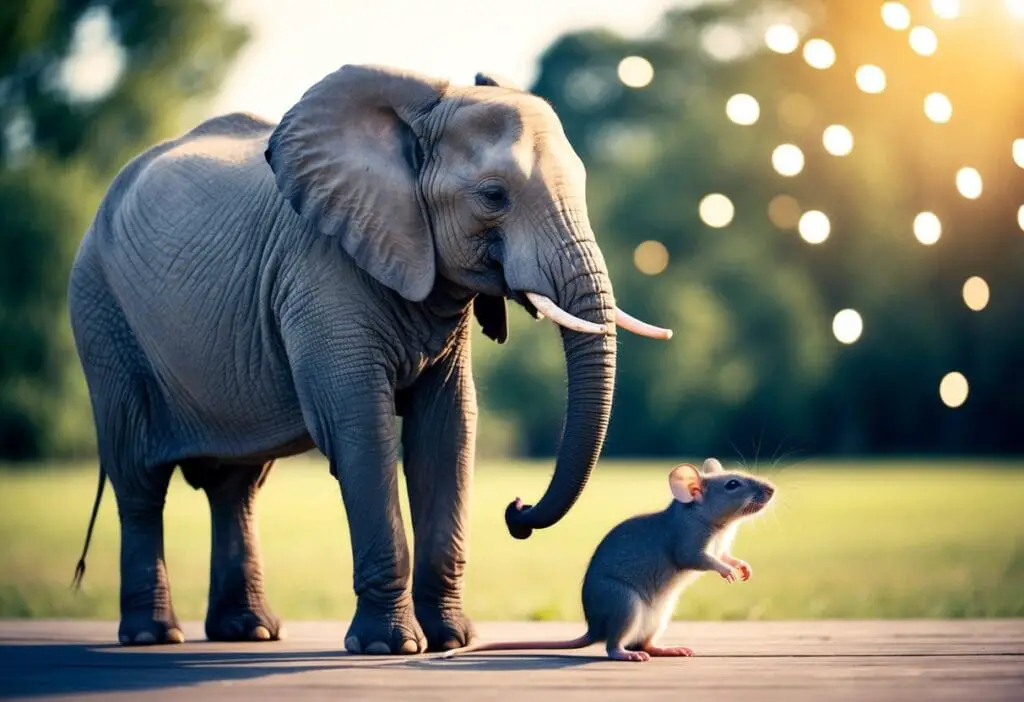
Short Lifespan Creatures
Time varies greatly for different animals. Some live very brief lives. Here’s a list of notable species with shorter lifespans:
| Animal | Lifespan |
|---|---|
| Mayfly | 24 hours or less |
| Drone ant | 3 days |
| Male mosquito | 1 week |
| Housefly | 15-25 days |
| Female mosquito | 1 month |
| Dragonfly | 4 months |
| Bed bug | up to 6 months |
| Moon jellyfish | up to 18 months |
| House mouse | 1 year |
| Panther chameleon | 1 year |
Unique behaviors exist among these animals. For instance, houseflies can produce around 1,000 eggs during their brief existence, while male mosquitoes do not feed on blood.
Remarkable Lifespan Species
Conversely, some species achieve extraordinary lifespans. Examples include:
| Animal | Lifespan |
|---|---|
| Bowhead whale | 200 years |
| Red sea urchin | 210 years |
| Quahog clam | up to 225 years |
| Greenland shark | over 270 years |
| Giant tube sponge | over 2,000 years |
| Turritopsis dohrnii | biologically immortal |
Humanity and Longevity
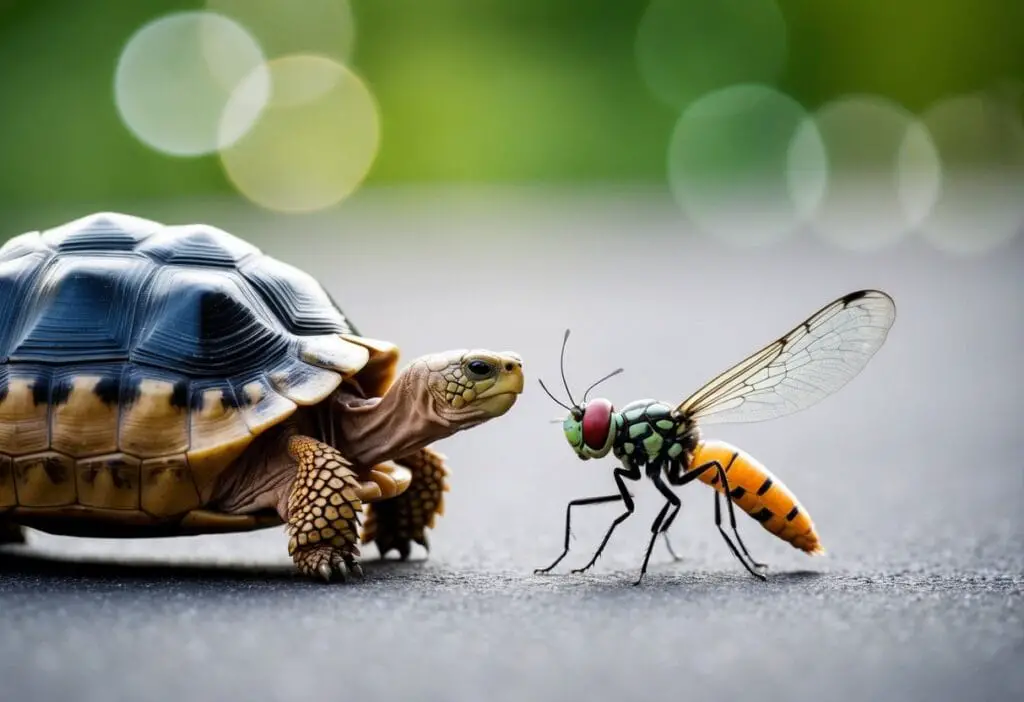
Life Spans of Different Species
Time significantly influences the life expectancy of various animals. Humans generally have a lifespan ranging from 68 to 73 years, which pales in comparison to numerous other species. Here are some living durations of various creatures:
- Mayfly: Approximately 24 hours
- Male mosquito: Roughly 1 week
- Housefly: Lives for 15-25 days
- Moon jellyfish: Lasts up to 18 months
- Opossum: Around 8 years
- Dog: About 13 years
Notable Lifespans
Some creatures are known for their extraordinary longevity:
- Orca: Lives up to 75 years
- Gray whale: Can reach around 77 years
- Galapagos tortoise: Has a lifespan of about 170 years
- Bowhead whale: May exceed 200 years
- Giant tube sponge: Some individuals have lived for over 2,000 years
- Turritopsis dohrnii: Also called the “immortal jellyfish,” it has the unique ability to revert to earlier life stages, potentially allowing for indefinite life.
Ancient Sea Creatures
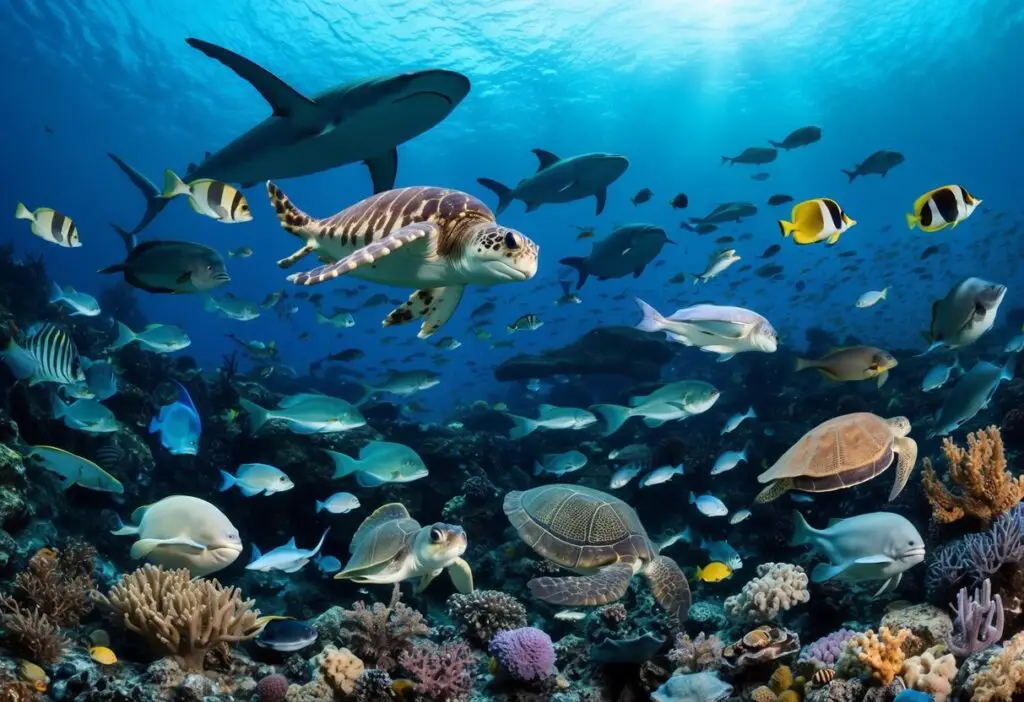
The ocean is home to several remarkable organisms that have endured for centuries. Their longevity is truly astounding. Here are some notable examples:
- Greenland Shark: This remarkable vertebrate can live for more than 270 years, making it the longest-living fish known to science.
- Giant Tube Worm: Surviving for around 250 years, these fascinating creatures are made up of numerous tiny organisms that function together as a unit.
- Quahog Clam: With a lifespan of up to 225 years, this clam species boasts individuals born as far back as the Ming dynasty in China.
- Red Sea Urchin: Known for their distinctive traits, these sea urchins can live up to 210 years.
- Coral Reefs: Certain coral species can survive for nearly 4,000 years, with some reefs, like the Great Barrier Reef, visible from space.
- Turritopsis dohrnii: Often referred to as biologically immortal, this jellyfish can revert back to its juvenile state repeatedly, allowing it to potentially live indefinitely.
Paragons of Longevity
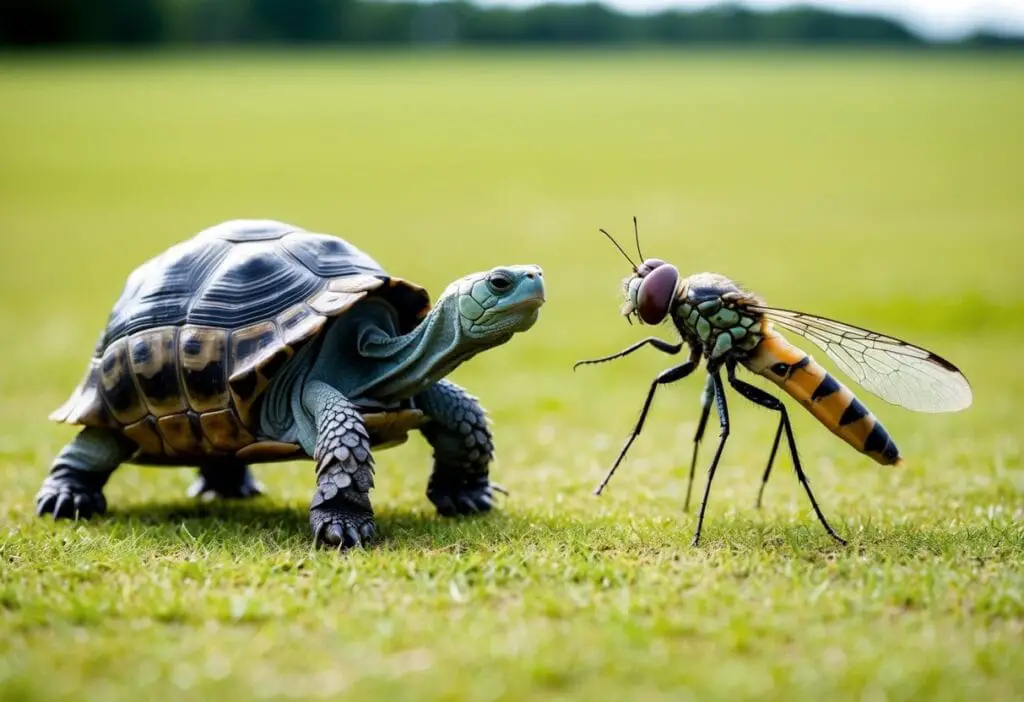
The Test of Time
Lifespans vary greatly among species. Some animals exist for only a brief period, while others endure for hundreds of years. Below is a list highlighting a few of the shortest and longest-lived beings:
Creatures Known for Short Lifespans:
- Mayfly: Lives for a mere 24 hours or less.
- Drone Ant: With a lifespan of only 3 days, this ant type has the briefest life.
- Housefly: Typically survives between 15 to 25 days.
Creatures Renowned for Long Lifespans:
- Greenland Shark: This vertebrate can exceed 270 years, making it the longest-living.
- Bowhead Whale: Known to reach around 200 years of age.
- Turritopsis dohrnii: Commonly referred to as the “immortal jellyfish,” it can revert to an earlier life stage and restart its life cycle.
Marine Methuselahs
The ocean hosts a variety of extraordinary animals with impressive lifespans. Some remarkable examples include:
- Quahog Clam: This species has been known to live up to 225 years, with the oldest recorded at 507 years.
- Geoduck: This large mollusk can survive for about 150 years, making it both the largest and longest-lived of its kind.
- Orange Roughy: A deepwater fish that can live as long as 175 years, facing significant threats from overfishing.
Organisms With Nearly Endless Lifespans
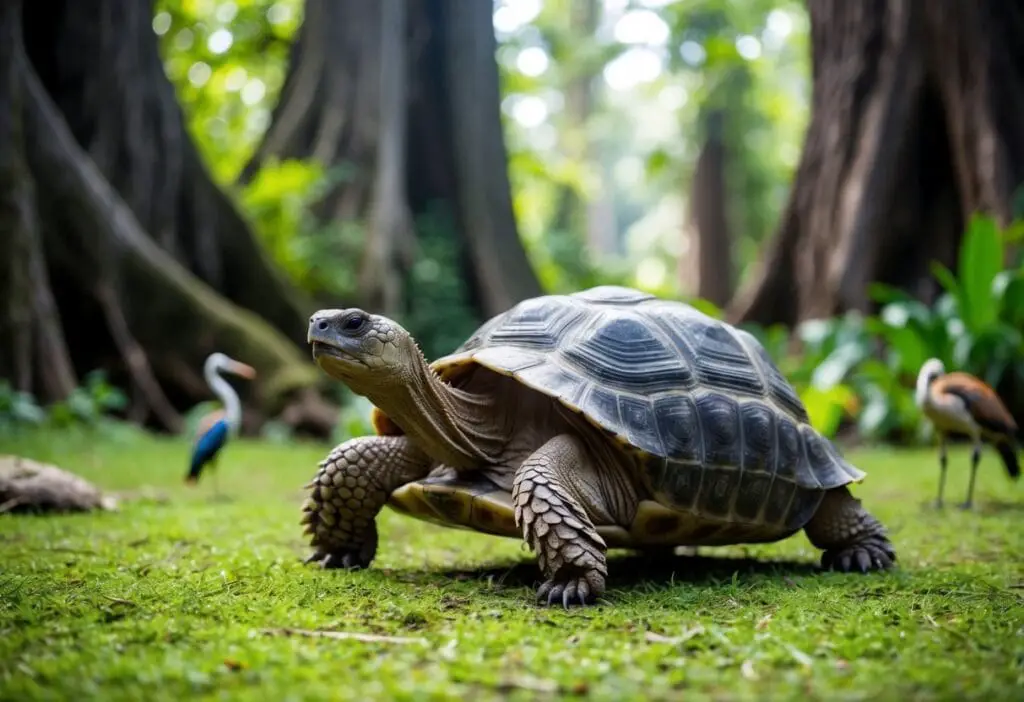
Many organisms on Earth exhibit remarkable lifespans. Some species live for many years, while others display astonishing longevity. Here is an overview of some of these unique creatures along with their typical lifespans.
| Organism | Lifespan | Notes |
|---|---|---|
| Mayfly | 24 hours or less | Known for having the shortest lifespan among insects |
| Drone ant | 3 days | This type of ant has a significantly brief existence |
| Male mosquito | 1 week | Does not consume blood and has a limited life |
| Housefly | 15-25 days | Capable of producing a large number of eggs |
| Female mosquito | 1 month | Consumes blood to nourish her eggs |
| Dragonfly | 4 months | Notable for its impressive size in the fossil record |
| House mouse | 1 year | Can fit through tiny openings due to its flexible body |
| Panther chameleon | 1 year | Shortest lifespan among reptiles |
| Mole | 3 years | Uses stores for food and has burrowing habits |
| Pigeon | 4 years | Often trained for carrying messages |
| Guinea pig | 4 years | Forms strong bonds with its owners |
| Honeybee | 5 years | Operates within a hive with organized communication |
| Dumbo octopus | 5 years | Recognized for its unique ear-like fins |
| Red panda | 7 years | Uses its tail for warmth |
| Opossum | 8 years | Commonly mistaken for a different species |
| Chicken | 9 years | Widely farmed and a staple in diets globally |
| Kangaroo | 10 years | Known for its robust hind legs used in mobility |
| Hummingbird | 12 years | Can achieve a rapid heartbeat of up to 1,200 beats |
| Cheetah | 12 years | The fastest running animal on land |
| Brushtail possum | 13 years | Related to kangaroos and known for its adaptability |
| Dog | 13 years | Breeds like Great Danes can stand quite tall |
| Tiger | 15 years | Recognized as the largest member of the cat family |
| Domestic cat | 16 years | Some breeds exceed 3 feet in length |
| Platypus | 17 years | Notable as one of the few venomous mammals |
| Cow | 20 years | A popular farm animal, one notably reached 6’4” |
| Lion | 20 years | Female lions are the primary hunters in their groups |
| Polar bear | 20-30 years | Known as a top predator in its habitat |
| Queen ant | 20-30 years | The mother of the colony, capable of producing thousands |
| Giraffe | 25 years | The tallest land animal, characterized by its long neck |
| Grizzly bear | 30 years | Can run swiftly and is adept at climbing |
| Bald eagle | 32 years | An iconic bird in North America |
| Giant panda | 35 years | Equipped with a specialized grip for bamboo |
| Horse | 40 years | Various breeds exist, some domesticated |
| Camel | 40 years | Includes two main types: Dromedary and Bactrian |
| Common goldfish | Up to 40 years | Some known to live well into their forties |
| Orangutan | 45 years | Distinguished by their long arms and intelligent behavior |
| White rhinoceros | 50 years | Grey in color rather than white |
| Andean condor | 50 years | Noted for its massive wingspan and ability to soar |
| Laysan albatross | 55 years | Characterized by its awkward movement on land |
| Tuatara | 60 years | Possesses a unique third eye for light sensing |
| Longfin eel | 60 years | Its mysterious birthplace persists as an enigma |
| Macaw | 65 years | Some specimens can surpass 100 years in age |
| Human | 68-73 years | The most populous mammal species on the planet |
| Olm | 69 years | Recognized as “human-fish” due to its appearance |
| African bush elephant | 70 years | Notable for its lengthy gestation of nearly two years |
| Great white shark | 70 years | Must remain in constant motion to breathe |
| Japanese koi fish | Over 70 years | Capable of living for centuries under optimal conditions |
| Orca | 75 years | Known for its intelligence as a top ocean predator |
| Gray whale | 77 years | Has skin that hosts small life forms |
| Kakapo | 80 years | A rare species of flightless parrot |
| European eel | 88 years | Notable for its transparent youth stage |
| Blue whale | 90 years | The largest creature to have ever existed |
| Nile crocodile | 95 years | A species that thrived during the era of dinosaurs |
| Pacific ocean perch | 98 years | Lives a long life and adapts well to its environment |
| American lobster | 100 years | Noteworthy for its longevity and size |
| Japanese spider crab | 100 years | Famous for having long, graceful legs |
| White sturgeon | 104 years | Holds significance as both a food source and species |
| Freshwater pearl mussel | Over 110 years | Creates pearls through natural processes |
| Aldabra giant tortoise | 120 years | The largest of the tortoise family |
| Mediterranean spur-thighed tortoise | 125 years | Often kept as pets due to their gentle nature |
| Rougheye rockfish | 140 years | Some variants can live for over 200 years |
| Geoduck | 150 years | Recognized as both the largest and longest-living mollusk |
| Lake sturgeon | 152 years | Part of a wide range of freshwater species |
| Galapagos tortoise | 170 years | Celebrated as one of the oldest living tortoises |
| Orange roughy | 175 years | Known for its longevity among deep-sea fish |
| Bowhead whale | 200 years | Renowned for its exceptional lifespan |
| Red sea urchin | 210 years | Another example of a long-lived marine organism |
These organisms showcase the incredible diversity of lifespans among life on Earth. Each species has adapted uniquely to its environment, allowing for remarkable longevity in some cases. Understanding the lifespan of these organisms helps highlight the complexity of ecological balances and the ecosystems they inhabit.
Frequently Asked Questions
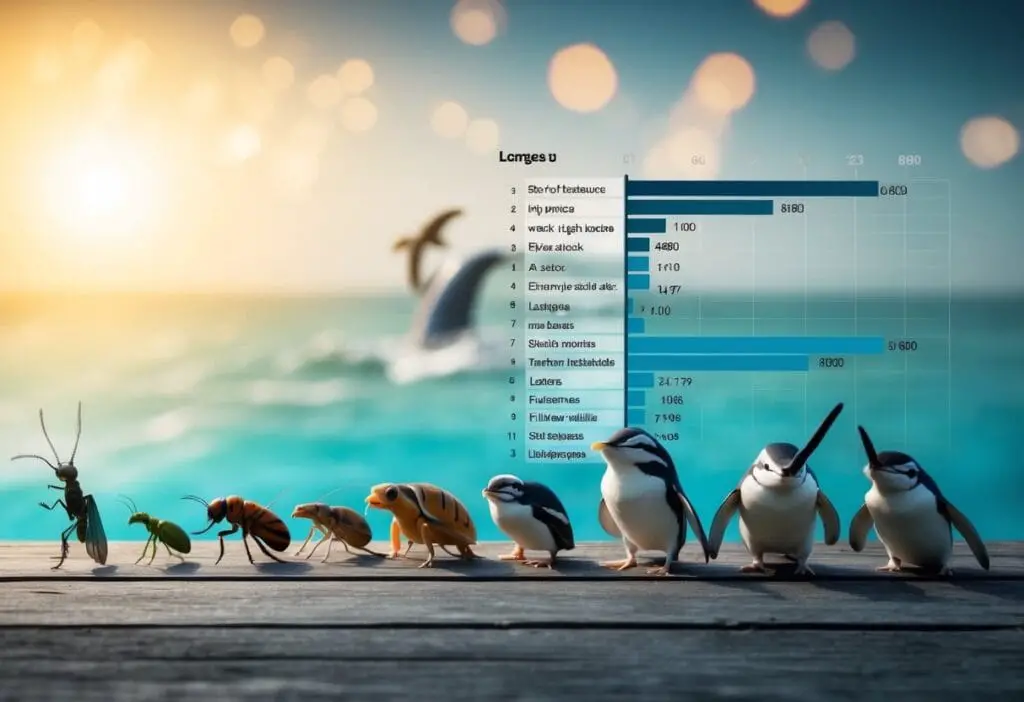
What are the top 5 animals with the shortest lifespans?
The following animals are known for having very short lifespans:
- Mayfly – Lives for about 24 hours.
- Worker Ant – Typically survives for a few weeks.
- House Mouse – Average lifespan of around 1 to 2 years.
- Shrew – Lives up to 2 years.
- Fruit Fly – Lives for about 30 days.
How long do mayflies typically live?
Mayflies are famous for their brief existence. They generally live for a maximum of one day as adults, while their larval stage can last up to several months, depending on the species.
Which mammals have the shortest life expectancies?
Among mammals, some of the shortest life expectancies are seen in:
- Shrews – Survive for about 2 years.
- House Mice – Live around 1 to 2 years in the wild.
- Certain Bats – Depending on the species, some have shorter lifespans, averaging around 3 years.
Which creature is known to live for only about 5 minutes?
The adult mayfly is known for having an extremely short life. Typically, it lives for about 5 minutes. This short adult life is dedicated mainly to reproduction.
What are some of the longest-lived animals on Earth?
The longest-lived animals include:
- Greenland Shark – Can live for over 400 years.
- Bowhead Whale – Has an estimated lifespan of over 200 years.
- Giant Tortoise – Known to live up to 177 years.
Can any animals live for over a century, and if so, which ones?
Yes, several animals can live over a century. Some of these include:
- Ocean Quahog – A type of clam that can live for more than 500 years.
- Certain Tortoises – Like the Aldabra tortoise, which can live well beyond 100 years.
- Rougheye Rockfish – Known to live over 200 years.


